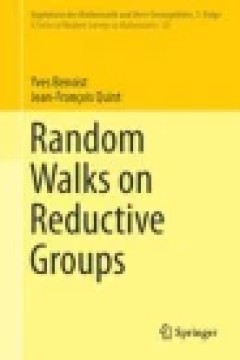Filter by

Rationality Problems in Algebraic Geometry
roviding an overview of the state of the art on rationality questions in algebraic geometry, this volume gives an update on the most recent developments. It offers a comprehensive introduction to this fascinating topic, and will certainly become an essential reference for anybody working in the field. Rationality problems are of fundamental importance both in algebra and algebraic geometry. Hi…
- Edition
- -
- ISBN/ISSN
- 978-3-319-46209-7
- Collation
- -
- Series Title
- -
- Call Number
- 516

Rational Points on Elliptic Curves
The theory of elliptic curves involves a pleasing blend of algebra, geometry, analysis, and number theory. This volume stresses this interplay as it develops the basic theory, thereby providing an opportunity for advanced undergraduates to appreciate the unity of modern mathematics. At the same time, every effort has been made to use only methods and results commonly included in the undergradua…
- Edition
- -
- ISBN/ISSN
- 978-3-319-18588-0
- Collation
- -
- Series Title
- -
- Call Number
- 516

Rational Extended Thermodynamics beyond the Monatomic Gas
This book is dedicated to the recent developments in RET with the aim to explore polyatomic gas, dense gas and mixture of gases in non-equilibrium. In particular we present the theory of dense gases with 14 fields, which reduces to the Navier-Stokes Fourier classical theory in the parabolic limit. Molecular RET with an arbitrary number of field-variables for polyatomic gases is also discussed a…
- Edition
- -
- ISBN/ISSN
- 978-3-319-13341-6
- Collation
- -
- Series Title
- -
- Call Number
- 510

Palms and People in the Amazon
This book explores the degree to which landscapes have been enriched with palms by human activities and the importance of palms for the lives of people in the region today and historically. Palms are a prominent feature of many landscapes in Amazonia, and they are important culturally, economically, and for a variety of ecological roles they play. Humans have been reorganizing the biological fu…
- Edition
- -
- ISBN/ISSN
- 978-3-319-05509-1
- Collation
- XIII, 500 halaman
- Series Title
- Geobotany Studies
- Call Number
- 584.5 SMI p

Rate-Independent Systems: Theory and Application
This monograph provides both an introduction to and a thorough exposition of the theory of rate-independent systems, which the authors have been working on with a lot of collaborators over 15 years. The focus is mostly on fully rate-independent systems, first on an abstract level either with or even without a linear structure, discussing various concepts of solutions with full mathematical rigo…
- Edition
- -
- ISBN/ISSN
- 978-1-4939-2706-7
- Collation
- -
- Series Title
- -
- Call Number
- 510

Rare-Earths and Actinides in High Energy Spectroscopy
This unique monograph covers recent theoretical and experimental results on the complex character of f electrons in materials containing lanthanides (rare earths) or actinides, such as alpha-cerium and delta-plutonium. It answers the urgent need for a general presentation of the body of experimental and theoretical results presently available in this challenging domain. Some of the fast develop…
- Edition
- -
- ISBN/ISSN
- 978-90-481-2879-2
- Collation
- -
- Series Title
- -
- Call Number
- 541

Random Walks, Random Fields, and Disordered Systems
Focusing on the mathematics that lies at the intersection of probability theory, statistical physics, combinatorics and computer science, this volume collects together lecture notes on recent developments in the area. The common ground of these subjects is perhaps best described by the three terms in the title: Random Walks, Random Fields and Disordered Systems. The specific topics covered incl…
- Edition
- -
- ISBN/ISSN
- 978-3-319-19339-7
- Collation
- -
- Series Title
- -
- Call Number
- 510

Random Walks on Reductive Groups
The classical theory of random walks describes the asymptotic behavior of sums of independent identically distributed random real variables. This book explains the generalization of this theory to products of independent identically distributed random matrices with real coefficients. Under the assumption that the action of the matrices is semisimple – or, equivalently, that the Zariski clo…
- Edition
- -
- ISBN/ISSN
- 978-3-319-47721-3
- Collation
- -
- Series Title
- -
- Call Number
- 519.2

Random Matrix Theory with an External Source
This is a first book to show that the theory of the Gaussian random matrix is essential to understand the universal correlations with random fluctuations and to demonstrate that it is useful to evaluate topological universal quantities. We consider Gaussian random matrix models in the presence of a deterministic matrix source. In such models the correlation functions are known exactly for an ar…
- Edition
- -
- ISBN/ISSN
- 978-981-10-3316-2
- Collation
- -
- Series Title
- -
- Call Number
- 510

Rainwater Harvesting for Agriculture and Water Supply
This book offers key resource materials developed for an international training course on Rainwater Harvesting and Utilization hosted annually by the Gansu Research Institute for Water Conservancy in Lanzhou, China since 2003. Topics cover the design, construction and management of rainwater harvesting systems for domestic water supply and supplementary irrigation, rainwater quality issues and …
- Edition
- -
- ISBN/ISSN
- 978-981-287-964-6
- Collation
- -
- Series Title
- -
- Call Number
- 577
 Computer Science, Information & General Works
Computer Science, Information & General Works  Philosophy & Psychology
Philosophy & Psychology  Religion
Religion  Social Sciences
Social Sciences  Language
Language  Pure Science
Pure Science  Applied Sciences
Applied Sciences  Art & Recreation
Art & Recreation  Literature
Literature  History & Geography
History & Geography